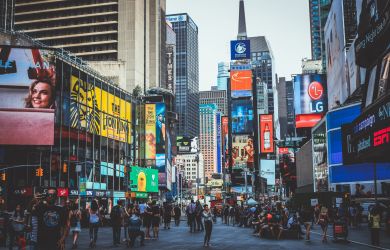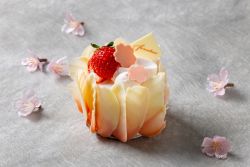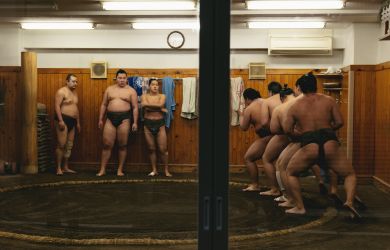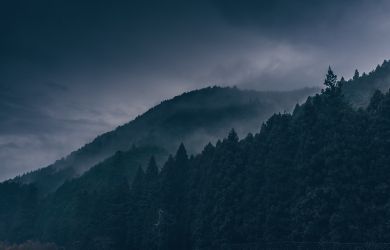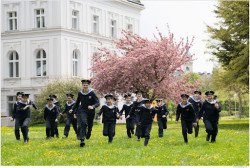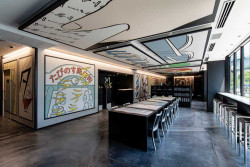
June 24, 2010
Picture This
After scaling the heights of the New York fashion world, photographer David Stetson rediscovers his muse in Tokyo.
By Metropolis
Originally published on metropolis.co.jp on June 2010

Photos courtesy of Stetson Studio / Gallery. ©David Stetson 2010
To be an artist, you need two things: technical skill and inspiration. Acquiring the former is not an impossible task. Some people pick it up on their own through trial and error; others go to school to sharpen their skills. And still others just seem to be born with a natural aptitude.
Inspiration, on the other hand, is much harder to come by. All the skill in the world will still leave you with mediocre, if technically flawless, work unless it has that little flicker of life, that extra quality that transforms craft into art. Inspiration is a fickle thing, and many an artist has lain awake in the dead of night, wondering when or whether it will visit them again. If inspiration abandons them, artists can go to any lengths to recapture the muse, even if it means traveling to the opposite side of the earth. As British photographer David Stetson will attest, sometimes that’s exactly what you have to do.
Stetson, 56, started his career in London in the early ’70s. Like many young photographers, he spent several years as an assistant to more established lensmen, gaining contacts and experience. But when the time came to strike out on his own, he was faced with a dilemma.

From the exhibition “Contrast,” featuring high-contrast black & white photography, Kodak Gallery, Ginza 1994
“My original desire was not to be a fashion photographer per se,” he explains at his newly opened Yoyogi studio. “I just wanted to be a photographer—I love taking pictures and I just wanted to create images through photography.”
However, economic realities force most freelance photographers to concentrate in a particular field. When an agency or a magazine is looking to commission a shoot, they’ll usually choose someone whose portfolio is stocked with photos like the ones they want to create.
“When I realized that I had to specialize, the obvious question was, ‘What should I specialize in?’” Stetson recalls. “And of all the photographers I worked for as an assistant, it occurred to me that the fashion guys had more fun than anybody else. So that’s what I chose.”
While it’s notoriously difficult for photographers to break into the editorial fashion field, Stetson worked his contacts and devised a clever strategy to get face time with the editors.

Alfred Hitchcock, taken during the making of the film Frenzy by a 16-year-old Stetson, 1970

Bulgarian sumo wrestler Kotooshu, 2006
“I offered my services free of charge to up-and-coming designers who were holding fashion shows,” he recalls. “In return for prints, they would furnish me with a list of the fashion editors that would be present at the show, in particular the editors who were there without their own photographers. I’d then call these editors and ask for an appointment to show my work—and I’d quickly add that I had authorized photos from [that] morning’s show.”
Before long, Stetson was working for prestigious publications like Harpers & Queen and The Sunday Times Magazine, as well as some of the biggest names in the fashion world: Max Factor, Givenchy, Christian Dior.
By the late ’70s, the photographer was shuttling between New York and London, eventually setting up his own studio in Manhattan. He found an agent to sponsor his visa, and discovered that his spontaneous style was a good fit for the lifestyle-focused photographs that were coming into vogue at the time. Jobs just kept rolling in—along with sizable fees—and David Stetson photographs began turning up everywhere from Glamour to the South African Cosmopolitan, and every fashion house in between.
The lifestyle of a hot young photographer in the ’80s New York fashion scene was as seductive and entertaining as you’d imagine it to be—parties galore, and no end of interesting people to rub elbows with. Stetson found himself traveling all over the world for his work, from European capitals to uninhabited Caribbean islands.
After ten years in the thick of the NYC scene, however, the photographer was beginning to feel that neither his heart nor his head was really in it anymore. So in 1989 he moved back to London and sought other outlets.
“One of the reasons I didn’t like fashion was the superficiality about the whole industry,” he says. “That’s what finally got to me—I was lying. The only thing that I was sincere about was getting the picture, so if I had to say or do a certain thing or flirt like crazy so [the models] would think that there was something going on, so that they would give me a little more than they would someone else, I would do it. But there wasn’t really. It was all for the picture.”
The late-’80s shift in the fashion industry toward grunge and “heroin chic” also turned him off. “That was it for me, because suddenly fashion became ugly and I just didn’t want to compete, I didn’t like it. It just didn’t look beautiful.”
Stetson began mulling over his career options and started dabbling in art photography, but he was also struggling with a major creative crisis—that flighty mistress, Inspiration, had gone AWOL.
“I’ll tell you what started it: Fellini’s 8 1/2.” he recalls. “Somehow, there was something about what was going on in my life at the time, and then seeing that film, I thought, ‘Can that really happen? Can you really lose the creative energy, whatever it is that enables you to take pictures?’ And I thought I had lost it. I thought it had gone… I just thought I’d lost the ability to take good pictures.”
